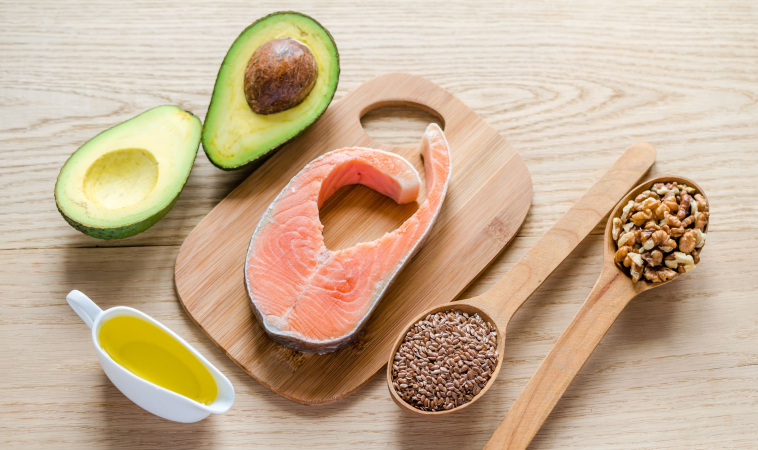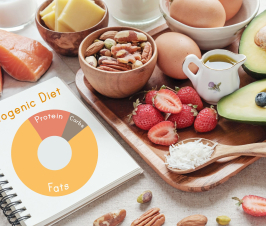Dr. Marc Bubbs ND, CSCS
@DrBubbs
By far, weight loss is the most common resolution clients make, yet the research shows less than 5% will achieve their goals by the end of the year. Why is it so difficult to stick with a weight loss diet?
One of the main reasons you fail to make lasting change is that you aren’t developing new habits. Simply following a new “diet plan” is good in the short-term, but unless you can integrate those changes into your lifestyle, it will never pan out in the long run. You can only follow what your trainer or doctor tells you to do for so long. Life gets busy and despite your best intentions, you revert back to old behaviors.
You need to find a diet with a high compliance rate, meaning people can stick to it and incorporate it into their life. Next, you need to find a diet that creates “satiety”, which means you feel fulfilled after eating and don’t feel like you’re starving yourself or missing out on all the pleasures of eating. Then you need to make sure the diet actually works, does the research prove its effective for weight loss? Lastly, we don’t want any fad diets or detox plans that trigger loses of lean muscle; glycogen (the carb stores on your muscles) or water… this is fools gold. You want a diet that improves your health, along with trimming your waistline.
A low-carb diet meets all of the above criteria, compliance, satiety, effective weight loss and better health. Let’s take a closer look at how.
Low-Carb & Compliance
Compliance is a huge factor when considering the best nutrition approach for you. No matter how good a diet plan may be, if you can’t stick to it, it’s worthless. Recently, a review study compared the latest diet trends in an attempt to uncover the diet people will actually stick to the best. The results were very clear, the low-carb diet (and very low-carb or ketogenic diets) had the lowest attrition rates compared to all the other diets.1 Remember, you can lose weight with a variety of different approaches, but choosing a diet you can stick to and incorporate into your lifestyle will set you up for long-term success.
Low-Carb & Satiety
The most common diet myth in the blogosphere is that you can lose weight without any hunger. The hard truth is when it comes to weight loss; feeling a bit of “hunger” is a good thing, kicking off a cascade of biochemical reactions that flip the switch to get your body burning more fat. That said, if you’re chewing your arm off because you can’t make it to lunch or dinner, then your new dietary regime is destined for failure. Along with superior compliance, low-carb diets have been shown to produce the greatest level of satiety – feeling full and satisfied after your meal.2 Enjoying your meals and enjoying what you eat is incredibly important, not to mention a big part of our social fabric; getting together with friends for dinner, grabbing a coffee or tea with a friend, chatting around the break room at work. Choose high-protein, high-fat foods to help curb hunger cravings. Not only are they delicious, but also incredibly nutrient-dense snacks you can enjoyable without having feeling like you’re missing out.
Low-Carb & Weight Loss
Now that you know low-carb or very low-carb ketogenic diets are highly satiating and seem to be the best dietary approaches to implement in the long run, are they effective for losing weight? The battle between the low-fat and low-carb groups has been raging for many years now, but it seems the answer is becoming more and more clear.
The British Journal of Nutrition recently released a review study comparing the two dietary approaches for weight loss. The meta-anlaysis of 13 studies following 1,300 participants for over a year found that low-carb diets, across the board, showed much greater capacity to support weight loss than low-fat diets.3 Furthermore, the participants in the low-carb groups also saw significant improvements in blood pressure, triglycerides, “good” HDL cholesterol and reductions in “bad” LDL cholesterol.
How do low-carb diets support healthy weight loss?
The research shows it dramatically improves your blood sugar control and the function of your blood sugar hormone insulin. After you eat a meal, your blood sugar levels increase and insulin’s job is to shuttle sugars from the bloodstream into your cells. However, the more overweight or out of shape you are, the greater the amount of insulin you need to get the job done. This means higher circulating insulin levels in your blood, blocking your body’s main fat-burning enzyme hormone sensitive lipase (HSL).
How To Get Started?
If you want to get the biggest impact on your waistline in a short amount of time, a very low-carb or ketogenicdiet might be for you. It’s generally considered to contain approximately 50g of carbs or less daily. It’s called a ketogenic diet because when you dramatically reduce your carb intake, your body switches over to burning mainly fat for fuel and a by-product of this process are ketones. Ketones, once thought to be detrimental to your health, now shoe potential as important fuels for your brain and body.
Practically, a ketogenic diet entails significantly decreasing your intake of starchy carbohydrates (e.g. breads, pastas, rice, sweet potatoes, root veggies) while dramatically increasing your intake healthy fats. To give you and idea, two pieces of bread or one apple and one banana would equal your total carbs for the day. For this reason, there is not a lot of fruit permitted on a ketogenic diet (i.e. berries are a common exception). The intake of protein is considered moderate, aiming for approximately 0.6-0.8 grams per pound of your bodyweight per day. The carb focus is from leafy greens and nutrient-dense, low carb veggies (i.e. broccoli, cauliflower, asparagus, kale, etc.)
If this sounds a little too aggressive, a traditional low-carb diet might be a better bet. It typically consists of 100g of carbs or less per day, which allows for more consumption of fruit and small portions of complex carbs throughout the day. If your diet already consists of a large amount of carbs, a classic low-carb approach will be easier to adhere to in the short-term and is therefore a better place to start.
A low-carb diet, along with its cousin the ketogenic diet, seems to be head and shoulders above the rest when it comes to promoting weight loss, satiety, compliance and upgrading your health.
 Dr. Marc Bubbs, ND is a Naturopathic Doctor, Strength Coach, Speaker, Blogger, and Author of The Paleo Project – A 21st Guide to Looking Leaner, Getting Stronger, & Living Longer. Marc also serves as the Sports Nutrition Lead for the Canadian Men’s National Basketball Team and believes that diet, exercise, and lifestyle factors have the most profound impact on your overall health and performance.
Dr. Marc Bubbs, ND is a Naturopathic Doctor, Strength Coach, Speaker, Blogger, and Author of The Paleo Project – A 21st Guide to Looking Leaner, Getting Stronger, & Living Longer. Marc also serves as the Sports Nutrition Lead for the Canadian Men’s National Basketball Team and believes that diet, exercise, and lifestyle factors have the most profound impact on your overall health and performance.
References:
- Hession M et al. Systematic review of randomized controlled trials of low-carbohydrate vs. low-fat/low-calorie diets in the management of obesity and its comorbidities. Obes Rev. 2009 Jan;10(1):36-50.
- Sumithran P et al. Ketosis and appetite-mediating nutrients and hormones after weight loss. Eur J Clin Nutr. 2013 Jul;67(7):759-64.
- Bueno N et al. Very-low-carbohydrate ketogenic diet v. low-fat diet for long-term weight loss: a meta-analysis of randomised controlled trials. Br J Nutr. 2013 Oct;110(7):1178-87.

















